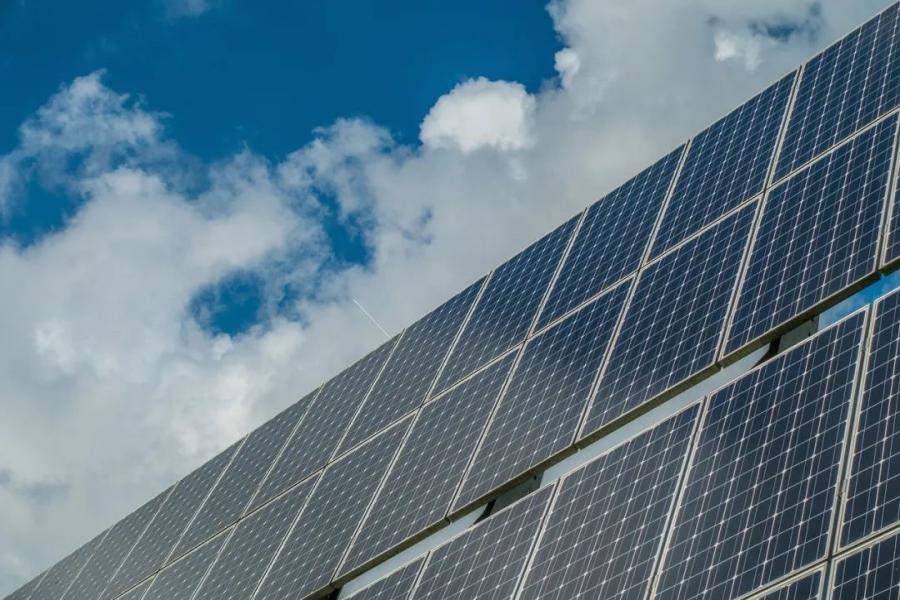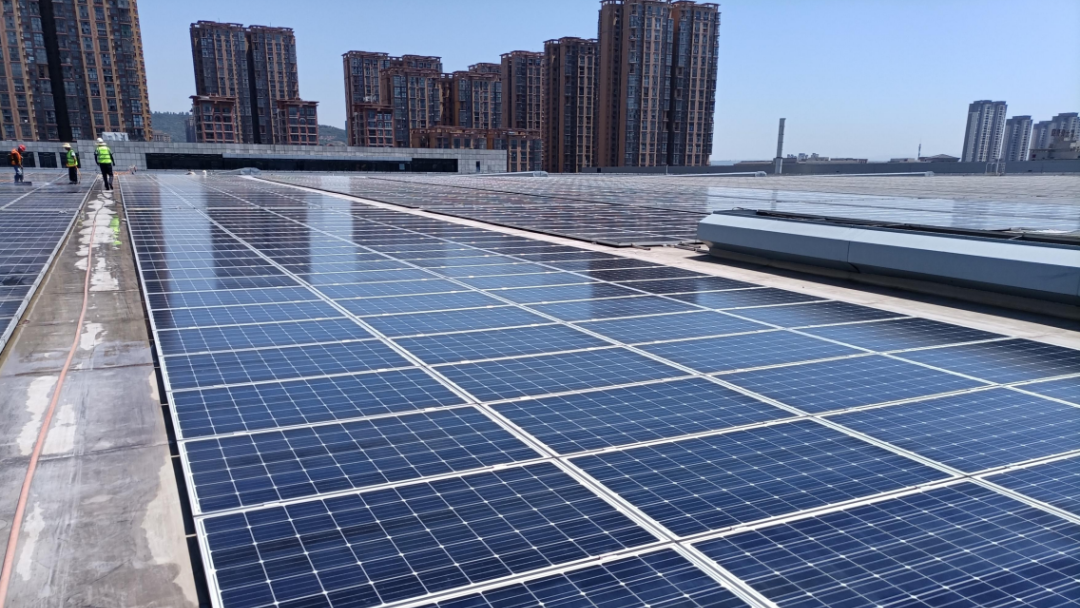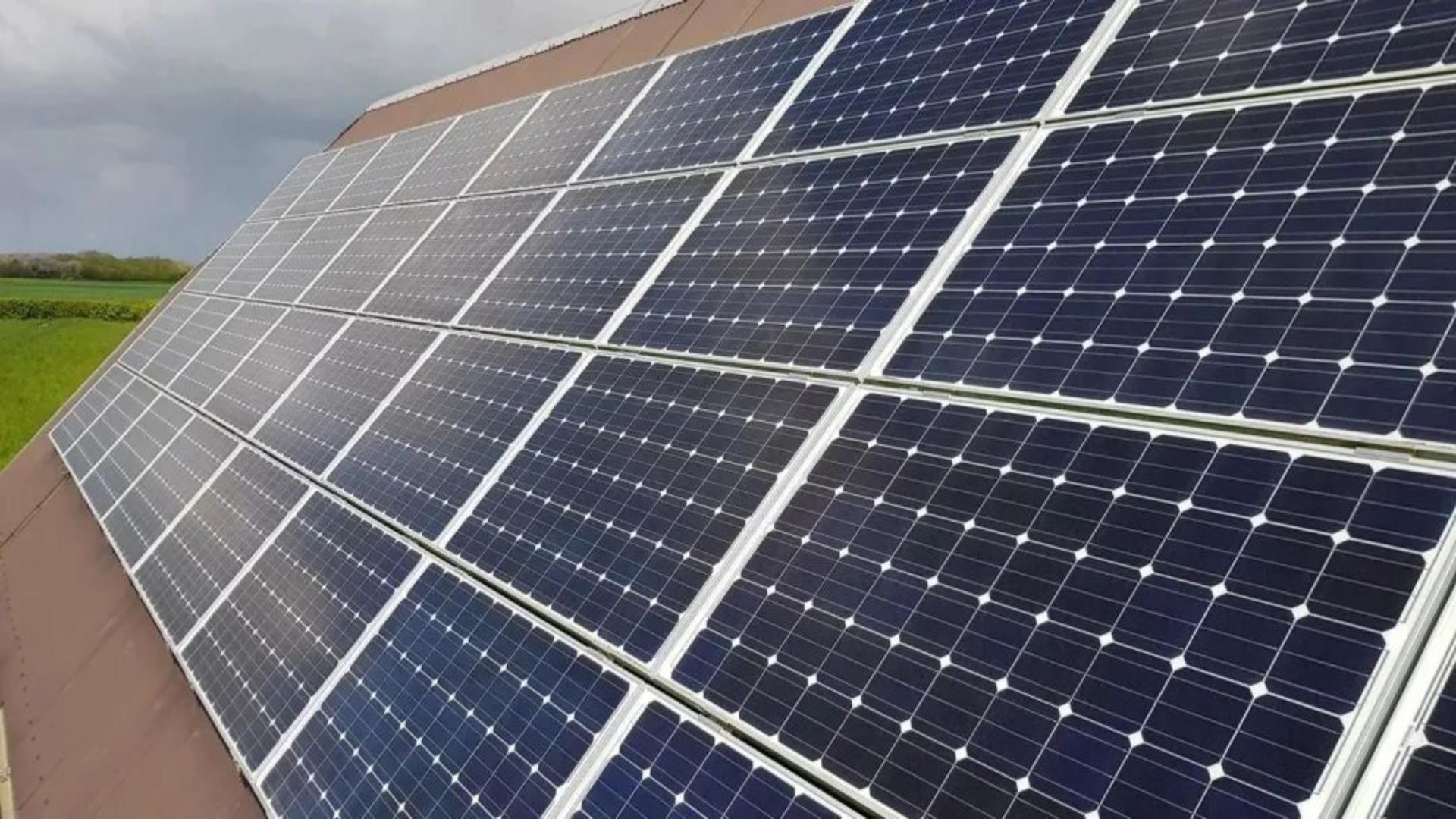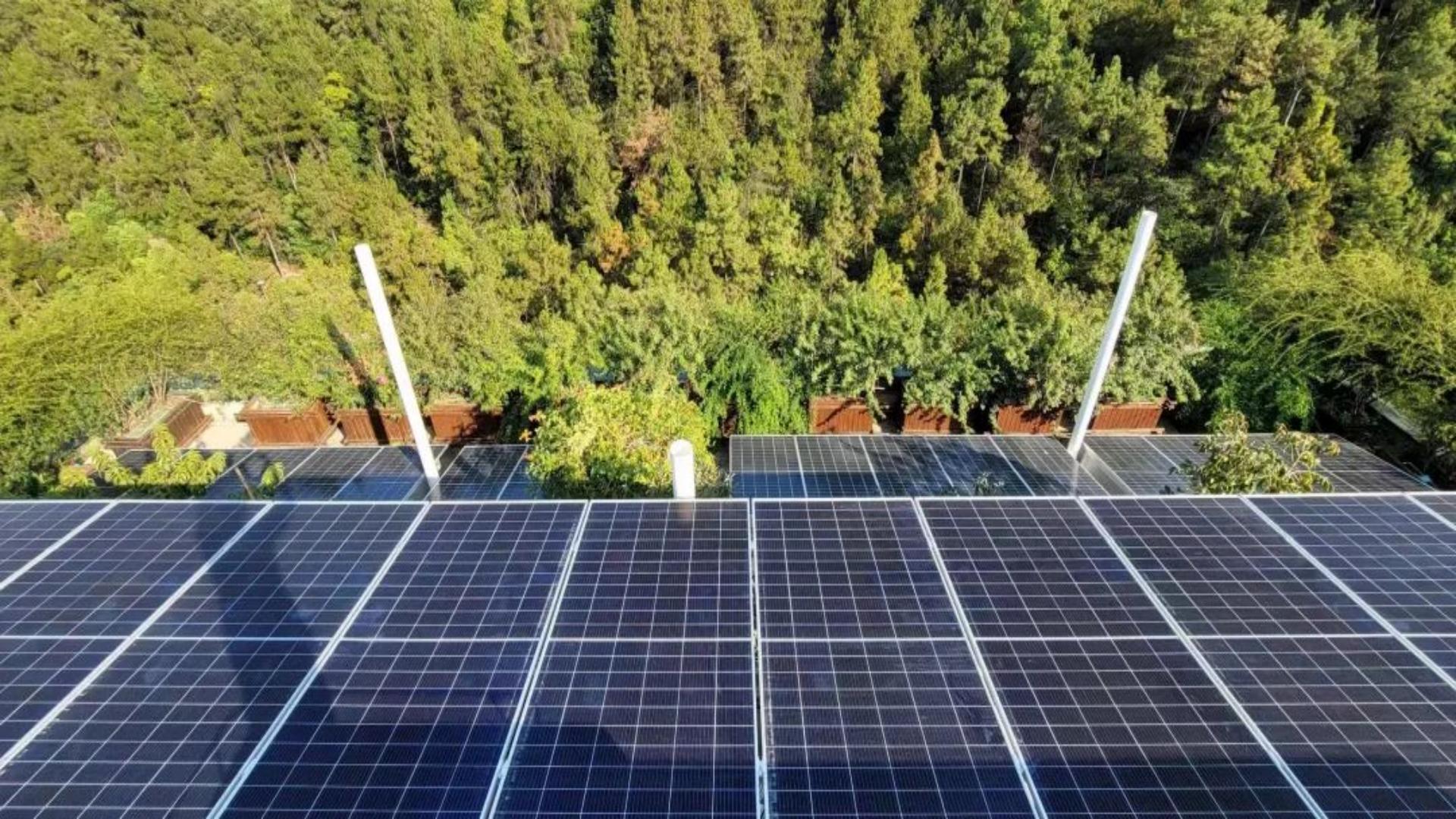Solar Panel Principle, Composition And Function Of Each Part | DSBsolar
Solar panel principle
A solar panel is composed of one or more solar cells, which are semiconductor devices that convert light into electricity. The solar panel can convert solar radiation that is incident on its surface into direct current (DC) electricity. The solar panel is the most basic component of a photovoltaic power generation system/product and is the core part of a solar photovoltaic power generation system. Its main function is to convert solar energy into electrical energy and store it in batteries.
Composition and functions of solar panels
-
Tempered glass: Its function is to protect the main power generation component (such as the solar cell). The selection of transparent tempered glass is important. It must have high transmittance (generally above 91%) and undergo super white tempered treatment.
-
EVA: Used to bond and fix the tempered glass and the main power generation component (solar cell). The quality of transparent EVA directly affects the lifespan of the module. EVA exposed to air is prone to aging and yellowing, which affects the transmittance and power generation quality of the module. In addition to the quality of EVA itself, the lamination process of the module manufacturer also has a significant impact. If the EVA bonding is not up to standard or the adhesion strength between EVA and tempered glass/backsheet is insufficient, premature aging of EVA may occur, affecting the module's lifespan.
-
Solar cells: The main function is power generation. The mainstream solar cells in the market are crystalline silicon solar cells and thin-film solar cells, each with its own advantages and disadvantages. Crystalline silicon solar cells have relatively low equipment costs but high material and cell costs. However, they have high photoelectric conversion efficiency and are suitable for generating electricity under outdoor sunlight. Thin-film solar cells have relatively high equipment costs but low material and cell costs. However, their photoelectric conversion efficiency is about half of crystalline silicon cells. They have excellent weak light performance and can generate electricity even under ordinary lighting, such as solar cells on calculators.
-
Backsheet: Its functions are sealing, insulation, and waterproofing. TPT and TPE materials are commonly used, and they must be resistant to aging. Most module manufacturers provide a 25-year warranty. Tempered glass and aluminum alloy are generally reliable. The key lies in whether the backsheet and silicone gel meet the requirements.
-
Aluminum alloy: It serves as a protective layer and provides a certain degree of sealing and support.
-
Junction box: It protects the entire power generation system and acts as a current transfer station. If the module has a short circuit, the junction box automatically disconnects the short-circuited battery string to prevent damage to the entire system. The selection of diodes in the junction box is crucial and varies depending on the type of solar cells inside the module.
-
Silicone gel: It provides sealing and is used to seal the module with the aluminum alloy frame and the junction box. Some companies use double-sided adhesive tape or foam instead of silicone gel, but silicone gel is widely used in China due to its simple process, convenience, ease of operation, and low cost.
Classification of solar panels
- Monocrystalline silicon solar panels
Monocrystalline silicon solar panels have a photoelectric conversion efficiency of around 15%, with the highest reaching 24%. This is the highest photoelectric conversion efficiency among all types of solar panels. However, the production cost is high, which prevents it from being widely and extensively used. Monocrystalline silicon solar panels are usually encapsulated with tempered glass and waterproof resin, making them sturdy and durable. The average lifespan is around 15 years, with some reaching up to 25 years.
- Polycrystalline silicon solar panels
The manufacturing process of polycrystalline silicon solar panels is similar to that of monocrystalline silicon solar panels. However, the photoelectric conversion efficiency of polycrystalline silicon solar panels is lower, approximately 12% (Sharp achieved the world's highest efficiency of 14.8% for polycrystalline silicon solar panels on July 1, 2004). In terms of production cost, polycrystalline silicon solar panels are cheaper than monocrystalline silicon solar panels. The material manufacturing process is simpler, saving electricity consumption, resulting in lower overall production costs. Therefore, they have seen significant development. Additionally, the lifespan of polycrystalline silicon solar panels is shorter than that of monocrystalline silicon solar panels. In terms of performance-to-price ratio, monocrystalline silicon solar panels are slightly better.
- Amorphous silicon solar panels
Amorphous silicon solar panels are a new type of thin-film solar panel that appeared in 1976. The manufacturing method of amorphous silicon solar panels is completely different from that of monocrystalline and polycrystalline silicon solar panels. The process is greatly simplified, with minimal silicon material consumption and lower electricity consumption. Its main advantage is that it can generate electricity even under weak light conditions. However, amorphous silicon solar panels have a lower photoelectric conversion efficiency, around 10% at the international advanced level, and they are not stable enough. The conversion efficiency deteriorates over time.
- Compound semiconductor solar panels
Compound semiconductor solar panels are solar panels made of semiconductor materials that are not single-element. There are various types of compound semiconductor solar panels being researched in different countries, most of which have not been industrially produced. The main types include:
- Cadmium sulfide solar panels
- Gallium arsenide solar panels
- Copper indium selenide solar panels.
Calculation of Solar Panel Power
A solar AC power generation system consists of solar panels, charge controllers, inverters, and batteries. A solar DC power generation system does not include an inverter. To provide sufficient power to the load, it is necessary to select the components based on the power consumption of the appliances. Let's take an example of a 100W output power, used for 6 hours per day, to explain the calculation method:
-
First, calculate the watt-hour consumption per day (including the inverter loss): If the inverter conversion efficiency is 90%, then when the output power is 100W, the actual required output power should be 100W/90% = 111W. If used for 5 hours per day, the power consumption would be 111W * 5 hours = 555Wh.
-
Calculate the solar panel: Assuming a daily effective sunshine time of 6 hours, considering charging efficiency and losses during the charging process, the solar panel's output power should be 555Wh/6h/70% = 130W. Here, 70% represents the actual power usage of the solar panel during charging.
Applications of Solar Panels
-
User solar power:
- Small power supply ranging from 10-100W, used for remote areas without electricity such as plateaus, islands, pastoral areas, border outposts, etc. for lighting, TV, radio, etc.
- 3-5KW home rooftop grid-connected power generation system.
- Photovoltaic water pumps for drinking water and irrigation in areas without electricity.
-
Transportation sector:
- Navigation lights, traffic/railway signal lights, traffic warning/signage lights, street lights, high-altitude obstacle lights, highway/railway unmanned telephone booths, etc.
-
Communication sector:
- Solar-powered unmanned microwave relay stations, cable maintenance stations, broadcasting/communication/paging power supply systems.
- Rural carrier telephone photovoltaic systems, small communication devices, soldier GPS power supply, etc.
-
Petroleum, marine, and meteorological sectors:
- Solar power supply systems for petroleum pipeline and reservoir gate cathodic protection, petroleum drilling platform life and emergency power supply, marine detection equipment, meteorological/hydrological observation equipment, etc.
-
Home lighting power supply:
- Solar courtyard lights, street lights, portable lights, camping lights, mountaineering lights, fishing lights, blacklight lamps, tapping lamps, energy-saving lamps, etc.
-
Photovoltaic power plants:
- 10KW-50MW independent photovoltaic power plants, wind-solar (diesel) power plants, various large-scale parking lot charging stations, etc.
-
Solar architecture:
- Combining solar power generation with building materials to achieve self-sufficiency in electricity for large-scale buildings, which is a major development direction in the future.
-
Other fields include:
- Automotive applications: solar cars/electric vehicles, battery charging equipment, car ai






